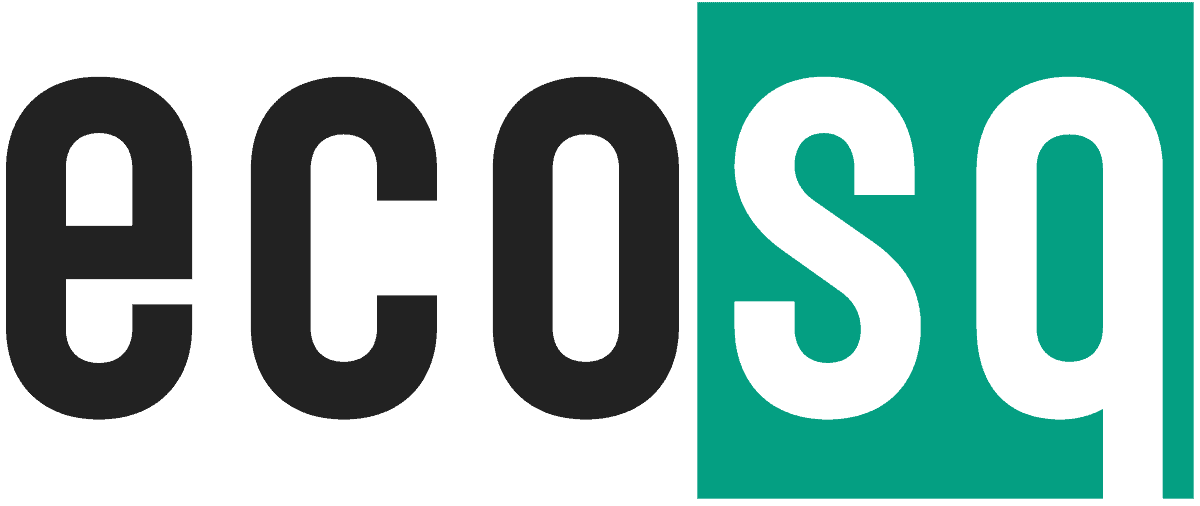The Complete Guide to Open Source Tree Inventory Software
This article was previously published in our newsletter. The content may no longer be up to date.
Trees are a vital component of healthy, sustainable communities. From improving air quality to enhancing property values, urban trees offer numerous environmental, economic, and social benefits. However, effectively managing and preserving these valuable green assets requires detailed tree inventories.
Traditional tree inventory methods can be cumbersome and costly. This is where open source tree inventory software comes in. These innovative tools are transforming how communities track and manage their urban forests.
In this comprehensive guide, we’ll explore:
- The importance of tree inventories
- Challenges with traditional inventory methods
- An introduction to open source tree software
- Key features and capabilities
- Real-world case studies
- Getting started with implementation
- The future of open source tree inventories
Let’s get started!
Why Tree Inventories Matter
Urban trees provide ecosystem services that are vital to community livability and sustainability. Some of the key benefits include:
- Air Quality – Trees absorb air pollutants like ozone, nitrogen oxides, and particulate matter. The urban forest can remove tons of these dangerous pollutants each year.
- Carbon Sequestration – Trees absorb and store carbon as they grow, helping mitigate climate change. Urban trees sequester millions of tons of carbon annually.
- Stormwater Management – Trees and their root systems absorb rainfall, reducing stormwater runoff. This alleviates pressure on drainage systems.
- Energy Conservation – Strategically planted trees shade buildings and reduce air conditioning needs. This decreases electricity demand.
- Health Benefits – Contact with nature reduces stress, blood pressure, and recovery times. Trees encourage outdoor recreation and social connections.
- Economic Boosts – Trees raise property values by up to 15%. Commercial districts see increased foot traffic and consumer spending when greener.
To steward these benefits over time, communities need an accurate inventory of their urban forest. Tree inventories allow cities to:
- Track changes in tree canopy cover
- Assess overall forest health
- Identify hazardous trees for removal
- Plan maintenance tasks like pruning and watering
- Prioritize planting locations
- Calculate ecosystem service values
- Inform policy and budget decisions
- Engage residents as citizen scientists
In short, tree inventories provide crucial data to monitor, manage, and maximize the benefits from a community’s urban forest.
Challenges with Traditional Tree Inventory Methods
In the past, tree inventories were conducted manually. Arborists would walk block-by-block surveying trees, recording data on paper, and taking photos for documentation.
While sometimes necessary, this approach has several limitations:
- Time-Consuming – With thousands of trees to assess, inventories could take months or years to complete. Data quickly becomes outdated.
- Labor-Intensive – Significant manpower is required to survey trees on-site over large geographic areas. This drives up costs.
- Data Gaps – Paper records can be lost or damaged. Details like maintenance needs or tree species may be missed in the field.
- Difficult Analysis – Conducting urban forestry analysis with paper records is tedious. Data has to be manually digitized.
- Limited Access – Paper inventories usually live in filing cabinets. The data isn’t easily shared with decision makers or residents.
- Tight Budgets – The high price tag limits what many communities can afford to spend on inventories. Funding tree care suffers as a result.
These factors make traditional inventories an unsustainable solution in the long-term. More efficient, cost-effective approaches are needed.
Introducing Open Source Tree Inventory Software
Open source tree inventory tools offer a cutting-edge alternative to traditional pen-and-paper inventories.
Open source software provides the full source code that is freely available for anyone to use, modify, or share. It harnesses the power of open collaboration and community development.
Applying this model to tree inventories provides multiple advantages:
- Cost Savings – Open source tools are free to use. There are no expensive proprietary licenses or subscriptions. This stretches limited urban forestry budgets further.
- Customizable Platforms – The source code can be modified as needed for each community. Open source is highly flexible and adaptable.
- Shared Innovation – Input from urban foresters, arborists, programmers, and users fosters rapid development. Everyone benefits from shared enhancements.
- Transparency – The code is visible for anyone to inspect. This allows for greater accountability and identification of potential issues.
- Accessibility – Online platforms increase accessibility. Data can be entered from any device and viewed by all stakeholders.
- Efficient Scaling – Web and mobile applications facilitate data collection across large regions. Inventory costs don’t rise proportionally with total trees counted.
This collaborative model creates tree inventory solutions tailored to overcome the pitfalls of traditional methods.
Key Features and Capabilities
Leading open source tree inventory platforms have optimized features for streamlined data collection and urban forest management.
User-Friendly Interfaces
Web and mobile apps feature intuitive design so arborists and citizens can easily catalog trees. Minimal training is required to get started. Data fields utilize dropdowns and auto-fill to prevent errors.
Mobile Data Collection
Tablets and smartphones allow tree attributes to be logged on-site. Location data, photos, maintenance notes, and hazard ratings can all be recorded in real-time while surveying.
GIS Integration
Inventory data integrates with geographic information systems (GIS) for robust mapping and visualization. Powerful dashboards convey urban canopy information at a glance. Maps help target priority areas for planting or trimming.
Flexible Reporting
Custom reports provide actionable insights on the urban forest. Users can assess trends, analyze conditions, identify risks, and quantify ecosystem services based on the inventory data.
Data Sharing
Online platforms allow inventory data to be securely shared across departments and with the public. Officials, arborists, and engaged residents can access the information.
Community Engagement
Public contribution models encourage residents to catalog trees in their neighborhoods. This engages citizens as urban forestry stewards while crowdfunding data collection.
Open API
An open application programming interface (API) enables seamless integration with other software systems. Tree inventory data can feed into permit systems or maintenance workflow platforms.
Combined, these features create complete end-to-end urban forestry solutions far beyond paper records. Next, we’ll see how real-world communities are leveraging these tools.
Open Source Software in Action
Open source tree inventory platforms have been implemented in diverse communities worldwide. These solutions are helping cities better manage their urban forests at lower costs.
OpenTreeMap
OpenTreeMap pioneered the open source tree inventory concept starting in 2011. The free web platform allows collaborative mapping and data management for trees.
Features include mobile inventory collection, robust visualization tools, and the ability to track planting, maintenance, and removal over time. Users can assess urban canopy goals, identify risks, and calculate ecosystem benefits.
OpenTreeMap has been used across North America, including in:
- New York, NY – Volunteers helped catalogue 650,000 trees in parks and along streets. The data guides $28 million in annual care for the urban forest.
- Detroit, MI – Residents were engaged to survey trees. The information targeted outreach on the city’s 10,000 vacant lots available for tree planting.
- Seattle, WA – Students conducted an inventory identifying available sites for new trees. This supported planning for the Trees for Neighborhoods program in lower-canopy areas.
- Toronto, Canada – The non-profit LEAF used OpenTreeMap to expand tree mapping city-wide. Residents can directly report on tree health and maintenance needs.
TreePlotter
TreePlotter is an open source tree inventory and ecosystem services assessment tool. The software is tailored for urban foresters’ workflows.
In addition to standard inventory functionality, TreePlotter also:
- Quantifies the dollar value of benefits provided by trees
- Models optimal planting schemes and scenarios
- Provides global positioning system (GPS) coordination
- Integrates with professional arborist software
Municipal users of TreePlotter include:
- Edmonton, Canada – The city partnered with TreePlotter to update its dated paper inventory. Crews surveyed 150,000 trees across 900 parks using the software.
- Calgary, Canada – TreePlotter was used to quantify the annual $22 million value provided by Calgarians’ trees. This data helped justify increasing the urban forestry budget.
- Toronto, Canada – Park planners configured TreePlotter to streamline seasonal inspection workflows. The software reduced inventory update time by 75% compared to paper forms.
i-Tree
i-Tree is a robust suite of urban and community forestry tools developed by the USDA Forest Service. The software is in the public domain and available for free.
i-Tree applications include:
- i-Tree Canopy – Allows users to easily photo-estimate tree canopy cover in any mapped area.
- i-Tree Eco – Field data on tree attributes feeds sophisticated models quantifying ecosystem services and values.
- i-Tree Species – Database of tree species characteristics to inform optimal tree selection for planting locations.
- i-Tree Landscape – GIS visualization and analysis of tree inventory data to guide planning and care.
Cities using i-Tree tools include:
- New York, NY – i-Tree Canopy informed urban canopy goals. i-Tree Eco valued NYC’s trees at over $5.5 billion in ecosystem services annually.
- San Francisco, CA – i-Tree Eco sampling data guided policies to expand tree canopy cover. i-Tree Species assists with appropriate tree selection for the area.
- Vancouver, Canada – i-Tree Canopy allowed the city to easily measure 15-20% canopy cover gain between 1995 and 2013.
This is just a sampling of the many municipalities leveraging open source platforms to enhance their urban forestry programs. The benefits for tree inventory efficiency, planning, and engagement are being realized globally.
Getting Started with Open Source Tree Inventories
Convinced of the advantages, but not sure where to begin? Here is a step-by-step guide to implementing open source tree inventory software in your community:
Choose a Platform
Research available options to select the open source solution that best fits your needs. Weigh factors like cost, features, mobility, user experience, and community adoption.
For many, OpenTreeMap or i-Tree offer the most well-rounded free platforms. TreePlotter adds value for extensive ecosystem services assessment.
Develop a Rollout Plan
Define the scope, schedule, resources, and workflows for your tree inventory initiative.
Will it be phased over years? Which areas or tree types will you prioritize first? How can residents be involved? Answering key questions will smooth the rollout.
Train on the Software
Bring staff up to speed on using the tree inventory platform. Cover data entry, reporting, visualization tools, analysis features, and any mobile components.
Ideally, provide hands-on training with real-world tree data. Supplement with user guides and online material.
Launch a Pilot Inventory
Test the software by performing a trial tree inventory for a sample area, like a neighborhood park. Evaluate the user experience and data value.
Fine-tune processes and identify training gaps before scaling up. Use pilot feedback to refine wider rollout plans.
Grow the Initiative
With successful piloting achieved, steadily expand the tree inventory across your jurisdiction. Move through priority areas first.
Promote community events for residents to help map trees in their neighborhoods. Leverage partnerships with schools, non-profits, and volunteers.
Maintain Momentum
Keep tree data current by performing cyclical re-inventories and integrating maintenance workflows. Sustain community interest through tree planting events, care workshops, and data access.
Use the insights from the inventory to track progress on urban canopy goals and make the case for strategic investments in tree preservation.
The Future of Open Source Tree Inventories
Open source tree inventory software has already evolved significantly in just over a decade since the first solutions emerged. But the technology still has ample room for advancement.
Here are a few exciting directions this field may head next:
- AI integration – Machine learning algorithms to automate tree species identification from photos or assess tree health from canopy imagery.
- LiDAR adoption – Light detection and ranging (LiDAR) data improves remote sensing accuracy of tree height, volume, and carbon content.
- IoT sensors – Internet of Things (IoT) allows remote monitoring of moisture levels and other parameters for sick trees.
- Augmented reality – AR could overlay tree inventory data as foresters walk through parks and neighborhoods.
- Blockchain – Distributed ledger technology enables tree credentials that track origin, planting, care, and steward history on the blockchain.
- Drones – Unmanned aerial vehicles (UAVs) allow rapid scanning of forests in rugged or remote areas.
- Climate resiliency – Climate suitability projections and ecosystem impacts inform strategic planting for long-term forest resilience.
Key Takeaways
To recap, here are the key lessons on leveraging open source software to enhance your community’s urban forest:
- Performing a comprehensive tree inventory provides crucial data for sustainability planning and stewardship.
- Traditional manual tree inventories have limitations like high costs and outdated data.
- Open source software offers free, adaptable tools purpose-built for tree inventories.
- Key features include mobile data collection, GIS integration, analytics, and public engagement.
- Cities worldwide have used open source platforms to increase tree inventory efficiency.
- With training and piloting, communities can smoothly adopt open source tree inventory systems.
- Ongoing maintenance and community involvement are vital for keeping inventories current.
- Emerging technologies like AI and LiDAR will further boost inventory capabilities in the future.
Are you ready to implement open source solutions to improve your urban forest management? Interested in a particular tree inventory software? Let’s continue the conversation in the comments below!







